Mammals are intelligent creatures. From elephants to apes and dolphins, our world’s clever, empathetic, and organized mammals display high intelligence levels. We know our pets are pretty clever, but what about wild mammals? Do they have the smarts too? Let’s take a look at the smartest mammals still living in the wild in England.
1. Squirrels
Intelligent squirrels live in all countryfied areas of England and quite a few towns and cities too. The native red squirrel, outcompeted by the American imported gray squirrel, is confined to a few pockets of Northern England. Not so the populous grays! Anyone with a bird feeder in England is aware of a gray squirrel’s capacity to break into their “squirrel-proof-nut-fort” within minutes.
This lightweight superfast mammal shows high intelligence levels. For example, rather than eating everything they find, squirrels have the smarts to store some away for winter so they don’t go hungry, and not only that, if they’re watched, they fake burying a stash to trick other squirrels.
With a vast array of communication signals to warn other squirrels of danger, plus their ability to recognize friendly human faces, squirrels are surely one of the smartest mammals living in England.
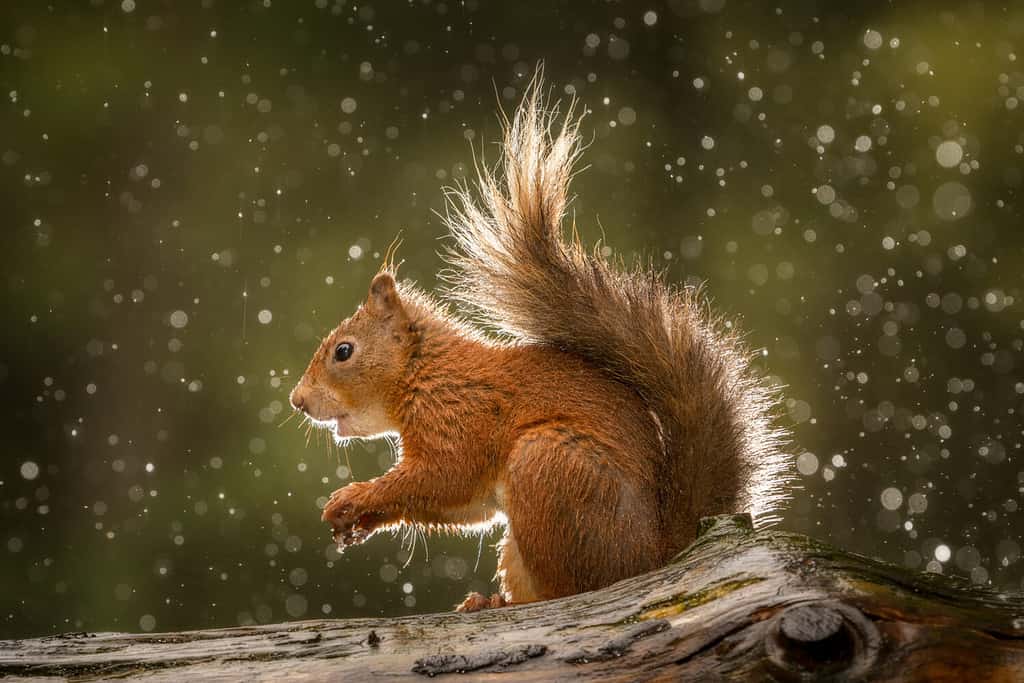
Clever squirrels fake bury nuts to trick other squirrels.
©Christopher Chambers/Shutterstock.com
2. Dolphins
Dolphins live around Cornwall on England’s south coast and Northumberland’s coast in the Northeast. The most common species is the bottlenose dolphin.
This aquatic mammal is known for its brain power. They’re one of the smartest mammals in the world. With their large brains and emotional intellect, bottlenose dolphins recognize their reflection and have great memories. They communicate with their pod using innumerable clicks, squeals, and whistles, and they team up to chase prey. Captive dolphins quickly learn hand signals and even recognize number values.
Chunky gray bottlenose dolphins reach 13 feet, weigh over 1,000 pounds, and live for 45-50 years. Their stubby beak, large dorsal fin, and various notches make England’s wild individuals easy to identify. In England, these smart mammals swim close to shore, breach, and splash about near boats for fish treat attention.

Bottlenose dolphins live on England’s south and northeast coasts.
©Tory Kallman/Shutterstock.com
3. Rats
Like squirrels, England’s wild rats have a bad reputation for spreading disease, but these rodents have incredible smarts. In tests, rats can find their way through mazes, multi-task, and show self-awareness through depression and loneliness. Some folk won’t be surprised to hear that rats show empathy to other rats caught in traps.
In England, brown wild rats live around homes and urban areas taking advantage of our waste, but they also live in the countryside. Their omnivorous diet means they’re highly adaptable, eating anything from birds’ eggs to insects, seeds, and fruit. Brown rats reach 10 inches long with a tail almost that long again and a cute whiskery face at the other end.
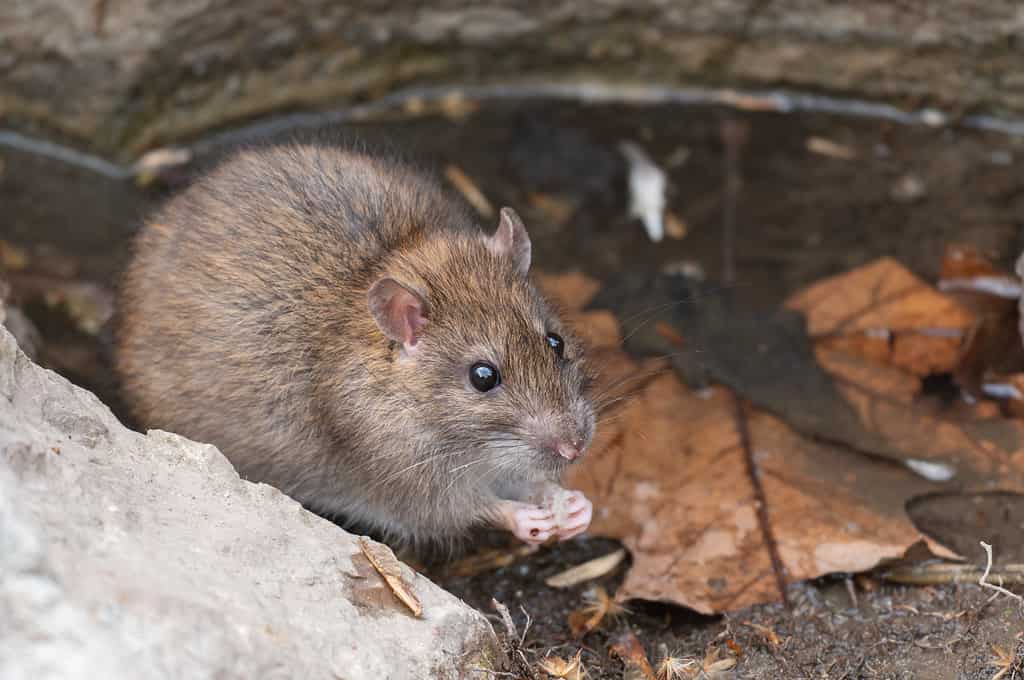
Intelligent rats can solve mazes, multi-task, and show empathy for other rats in distress.
©iStock.com/MriyaWildlife
4. Weasel
England’s smallest mustelid is a clever little mammal that reaches just eight inches long and one inch wide. Their brown backs and white undersides camouflage seamlessly into hedgerows and fields, which are their main habitats. During winter, weasel coats turn whiter to match the frosts and snowy ground.
Calling someone a “weasel” is an insult, but it refers to a weasel’s habit of escaping or taking advantage of any situation it finds itself in. What is this, if not intelligence? Compared to its skull capacity, a weasel’s brain is large, and they have the smarts to swim, run, leap, climb, and squeeze through tiny gaps in urban areas, pasture, woodland, marshes, and moors. They’re totally fearless. A weasel was even photographed flying on the back of a woodpecker in London! Experts say weasels are England’s most widespread predator, even though they’re barely ever spotted.
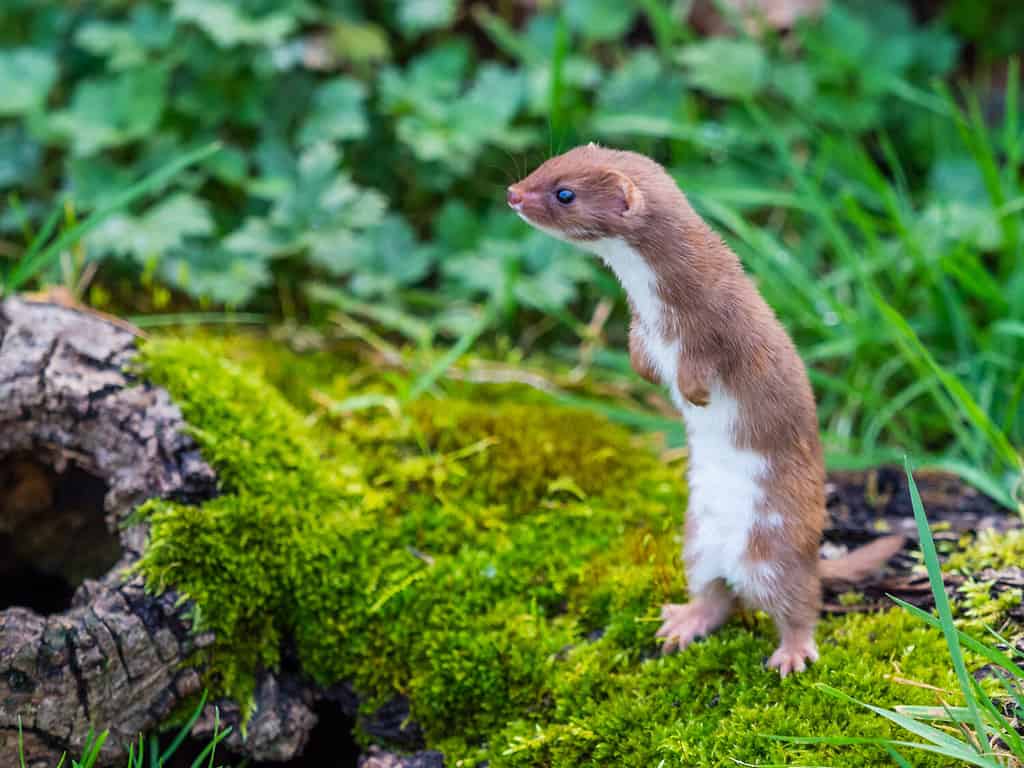
A weasel’s brown coat turns pale over winter for camouflage on frosty ground.
©Stephan Morris/Shutterstock.com
5. Red Fox
We’ve all heard the phrase “as sly as a fox,” which is never a compliment, but it should be because England’s red foxes are highly intelligent. Our towns and cities have encroached on their territory, but instead of hiding, orange-furred bushy-tailed foxes have adapted. England’s cities house numerous urban foxes, all taking advantage of our trash cans and safe gardens.
England’s only wild dog species is omnivorous. They hunt rabbits, birds, mice, and frogs but also eat fruit such as wild blackberries and garden-grown strawberries. Experts have discovered that a red fox has at least 20 calls to greet, argue, and communicate with other foxes and their cubs.
Watchful foxes learn by observation, repetition, and perseverance. Cubs copy their parents and soon pick up on their resourceful ways. They flourish in many environments and live successfully not just in England but in Australia, North America, Asia, Europe, and North Africa too.
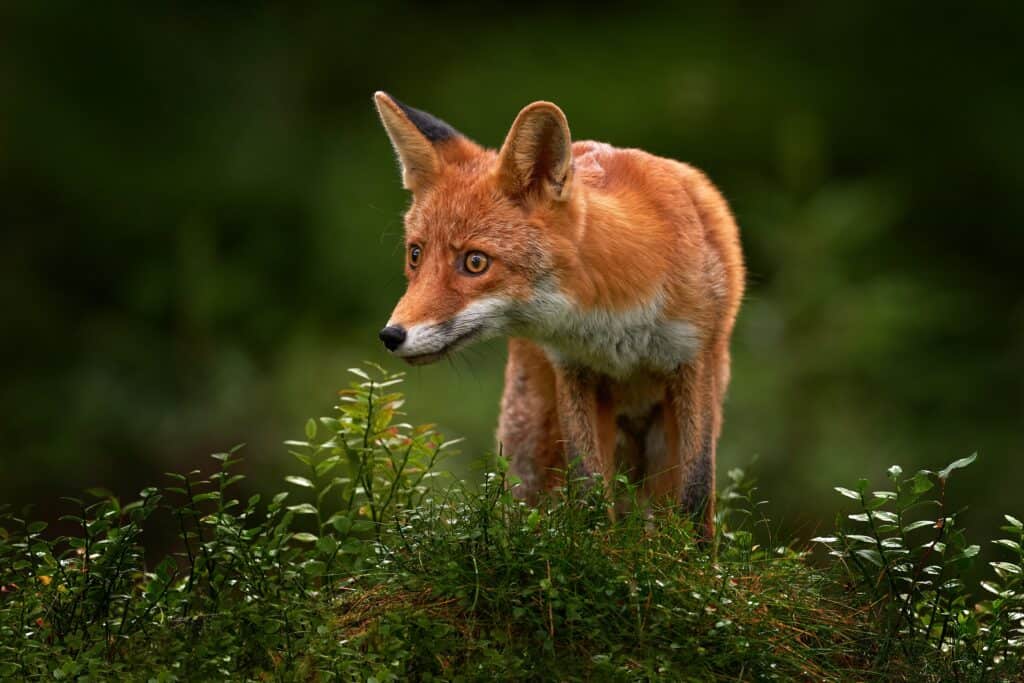
The red fox is England’s only wild dog.
©Ondrej Prosicky/Shutterstock.com
6. Seals
Two wild seal species live on England’s coastline, the gray seal and the common seal! The greater population lives in neighboring Scotland, but several colonies flourish on England’s east coast.
Both intelligent seal species hunt at sea but take shelter on England’s shoreline and estuaries, resting up on beaches and sandbanks to digest their fish, squid, whelk, and crab prey. Seals use their long whiskers to follow underwater vibrations from fish gills. Amazing.
Some folks call common seals “sea dogs” due to their inquisitive nature and intelligence. Seals quickly learn tricks in captivity, and their emotional intelligence is sky-high. Such as this report of a seal rescuing a drowning dog in Middlesbrough’s River Tees. Deep sea fishermen regularly report seals communicating for fish treats as they pull into the harbor.

Seals bask on sandbanks to digest their fish and crustacean prey.
©Ulrike Jordan/Shutterstock.com
7. Otters
England’s river otters suffered setbacks a few decades ago due to polluted waters, but their increasing numbers in southwest England is great news for England’s ecosystem.
These smart mustelids are one of the few mammals that use tools! Otters select rocks that easily break open shellfish and use water weeds to latch onto a river bank so they can float and eat in peace.
Otters’ thick brown fur, with a pale underside, is perfect for land and water use. They weigh up to 28 pounds and up to six feet in length from nose to tail tip. Their sensitive whiskers, broad noses, thick muscular legs, and powerful tails enable easy fish, crustaceans, and water bird capture. Otters are highly energetic, and adults require two pounds of food each day. Did you know an otter’s eyes sit high on its head so it can float submerged to hunt down prey, just like an alligator’s?
When they’re not hunting, otters play with their social group, which experts think strengthens emotional bonds.
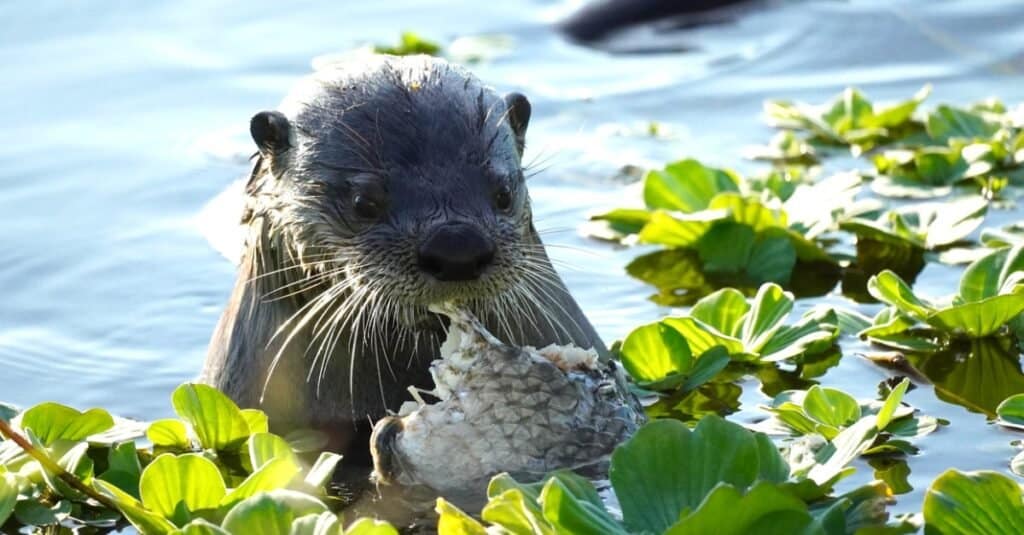
River otters use rocks to break open shellfish.
©iStock.com/Troy Levengood
8. Wild Boar
Although wild boar were hunted to extinction in the Middle Ages (alongside lynx, beavers, wolves, and elk), England’s Forest of Dean is home to a large population. Experts aren’t sure if they’re escapees from domestication or purposely released by wild boar fans, but they’ve colonized the forest, and without their natural wolf predators, increasing numbers are holding firm.
England’s wild boar have bred with domestic pigs, so they give birth to twice as many piglets than Europe’s wild boars, six to ten in fact — and they’re so stripy they’re christened “humbugs” after the famous sweet.
Smart wild boars shovel the ground in search of nuts, roots, tubers, truffles, and fungi. They’ve eluded human interference for decades and show absolute fearlessness when faced with domestic dogs. Without assistance, these clever boars have figured out how to survive in England’s chilly climate and limited woodlands.
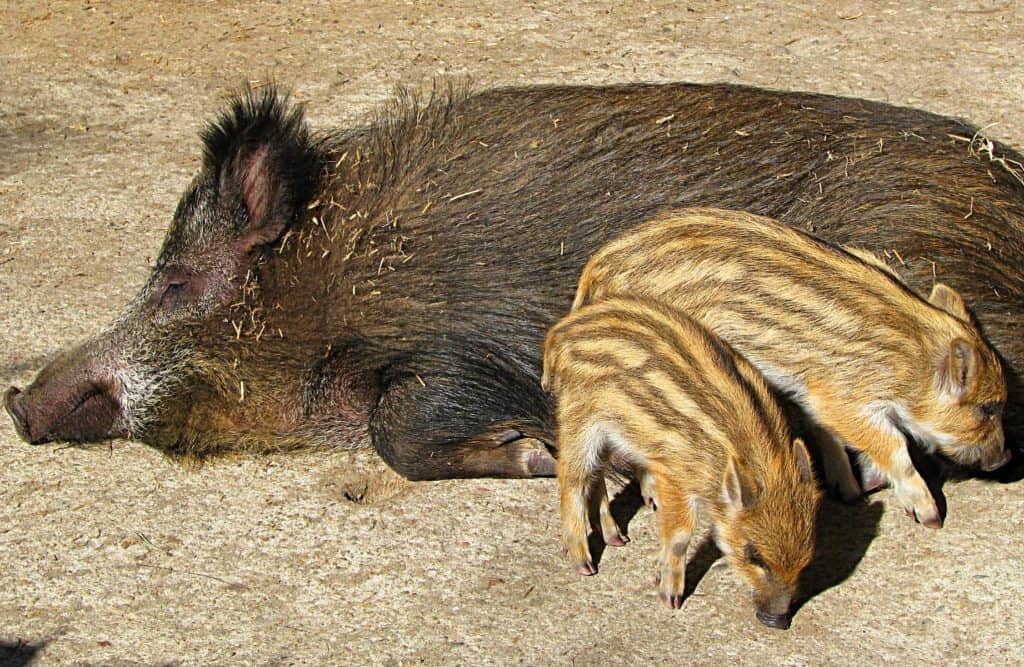
England’s Forest of Dean is home to a large group of wild boars.
©Jarosław Pocztarski / CC BY 2.0 – License
9. Badger
England’s largest land predator has a big brain to match.
Smart badgers’ black and white striped faces, stocky build, and powerful forelegs are unmistakable. These clever mustelid mammals reach 2-3 feet long, weigh 12 kg, and eat worms, invertebrates, fruit, carrion, and small mammals like hedgehogs and frogs. Despite their omnivorous diet, earthworms make up 80% of their daily intake!
Highly adaptable and opportunistic badgers live in England’s forests, woods, farmland, and even large gardens in setts with their “clan” social group. Clever badgers look after their setts, which reach hundreds of feet long and have up to 50 entrances. Some setts passed down the generations are known to be over a hundred years old! Badgers never toilet in their setts, and they don’t take in food either.
Badgers have such great persistence and patience that their intelligence shines through. Once their mind is made up, they’ll persist until the job is done, such as digging a new sett entrance or beneath a fence to gain access to a vegetable garden.
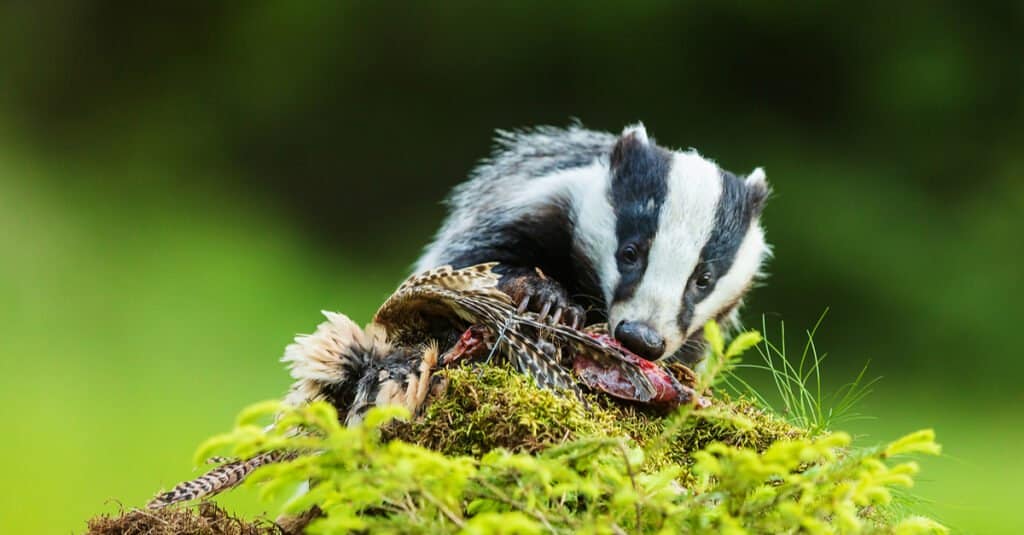
England’s badgers inherit setts from their parents, some are over 100 years old.
©Michal Ninger/Shutterstock.com
10. Wild Cats
Wild cats used to roam England 150 years ago but were hunted to extinction. However, great news for kitty lovers — they’re making a comeback. A conservation program is about to release 40-60 wildcats back in South England’s Devon and Cornwall counties at undisclosed locations.
Double the size of domestic cats, wild cats have thick fur, muscular legs, wide faces, and they hunt down rodent and rabbit prey. Wild cats are known for their intelligence. Masters of camouflage, these stealthy hunters with the ability to climb, jump, leap, and have the patience to figure out puzzles, are one of the smartest species around. Fingers crossed, they thrive in southern England’s forests.
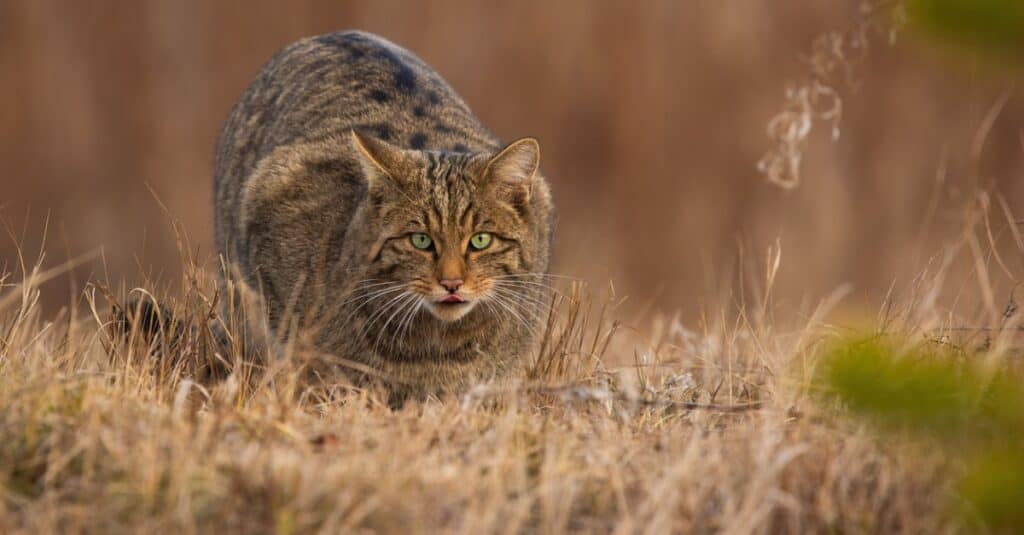
In the near future, wildcats may return to England’s south coast.
©iStock.com/JMrocek
The photo featured at the top of this post is © Ulf Wittrock/Shutterstock.com
Thank you for reading! Have some feedback for us? Contact the AZ Animals editorial team.







